The Strand as photographed by Anthony Frank Kersting
Posted in 1930-1939, 1990-1999, 2010-2019, 20th Century, 21st Century, Architecture, contemporary, Editorial blog posts, Places, public squares, Strandlines, streets and roads and tagged with AF Kersting, Anthony Kersting, Architecture, Conservation, Conway Library, courtauld, digitisation, Photography
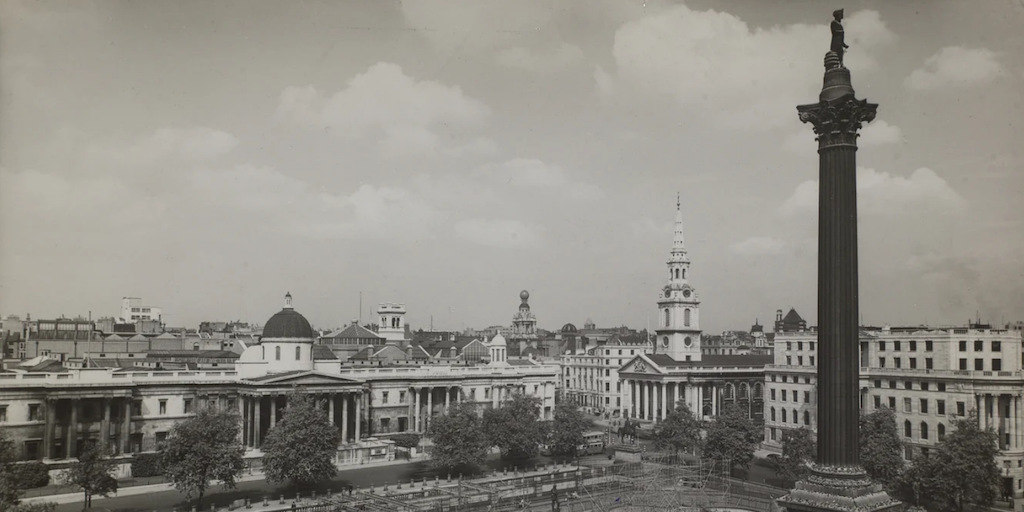
Anthony Frank Kersting was a prolific (and under-celebrated!) photographer of the 20th century. His collection of thousands of photographic prints and negatives, including glass plates, have been held at the Conway Library at the Courtauld Institute of Art since his death in 2008. The collection is being digitised as part of a huge project that started in 2017, and is slated to complete by 2022.
Currently, only a tiny fraction of Kersting’s work is available online. Much of that has been shared on the Courtauld Digital Media blog, in posts by volunteers, staff, and placement students, and on the Courtauld Digitisation project’s instagram and twitter. In this post, I’ve brought together photographs that have been digitised, shared, and researched by volunteers Rob Jarvis and Michael Mayes on the Conway Library collection on the Layers of London website.
The view from Embankment, 1936
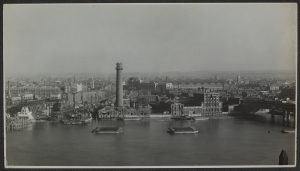
KER_PNT_H00568, ‘London: South Bank from Shell Mex House’, 17 Aug 1936, by Anthony Kersting, The Courtauld Institute of Art, CC-BY-NC.
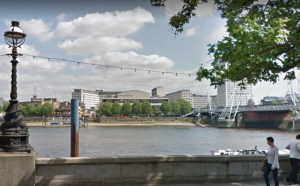
Google Street view of the Royal Festival Hall as seen from Embankment, photographed 2012, screenshot by Rob Jarvis.
Kersting’s photograph catalogued as H00568 shows a view probably unfamiliar to most Strand-dwellers today. The jumbled industrial landscape is infact the South Bank as it used to be, as viewed from the north side of the river.
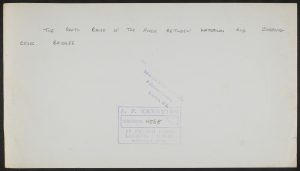
Reverse of KER_PNT_H00568, ‘The South Bank of the river between Waterloo and Charing Cross Bridges’, The Courtauld Institute of Art, CC-BY-NC.
On the reverse side of the photographic print, Kersting has written “The South Bank of the river between Waterloo and Charing Cross bridges”. In his hand-written ledger that accompanies his collection, Kersting identifies where he took the photograph: from Shell Mex House at 80 Strand (from a window, or perhaps even from the roof).
Rob Jarvis has put together Kersting’s image with a screengrab from Google Maps on Layers of London. He writes that “The Shot Tower has been replaced by the Queen Elizabeth Hall. It was a prominent landmark on the river and featured in a number of paintings, including by J. M. W. Turner.”
The Google Street view was taken in April 2019. The concrete lines of the Southbank Centre are softened by the trees which have flourished on the South Bank. It’s difficult to imagine that heavy industry was so central to the city not even 100 years ago.
Trafalgar Square, 1939
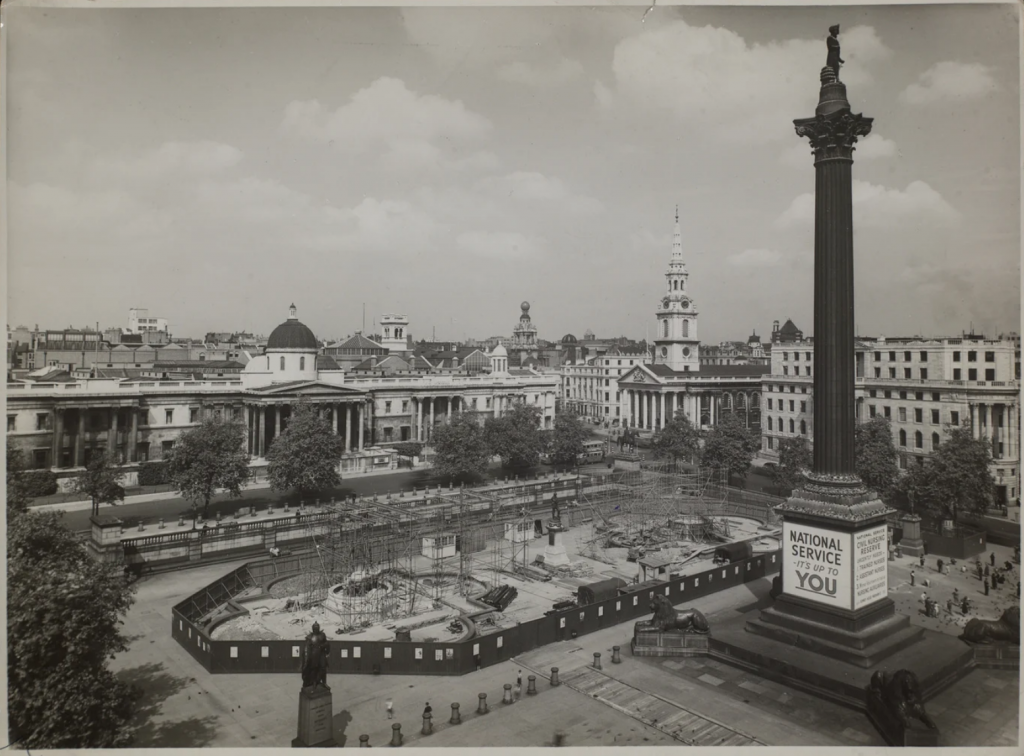
KER_PNT_H01915, ‘London: Trafalgar Square’, 27 Aug 1939, by Anthony Kersting, The Courtauld Institute of Art, CC-BY-NC.
Photograph H01915 us a view over Trafalgar Square, taken from the south west corner (again, from up high – – Kersting always manages to get access to the best angles!).
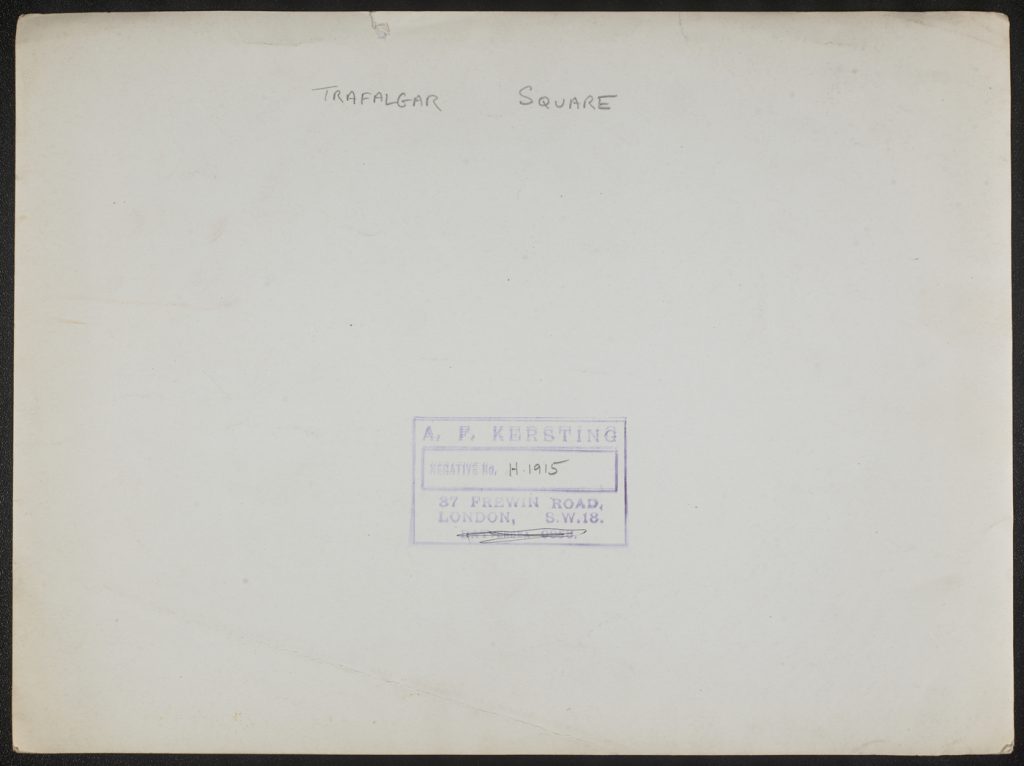
Reverse of KER_PNT_H01915, ‘Trafalgar Square’, 27 Aug 1939, by Anthony Kersting, The Courtauld Institute of Art, CC-BY-NC.
Kersting captures the fountains during their renovation in 1939. Sir Edwin Lutyens designed these features, which replaced but made use of the basins designed by Sir Charles Barry. (The rebuild was interupted by war, with the official opening postponed until 21 October 1948. See more on londontraveller.org).
Another detail dates the photograph, even if the fountains were obscured. Wrapped around the base of Nelson’s Column is a huge banner advertising for National Service. Kersting snapped this photograph exactly a week before Britain and France declared war against Germany on the 3 September 1939.
On the south side of the base are further details about the perks of the Nursing service. Women formed a huge part of the wartime workforce. By 1943, there would 74,000 members of the Women’s Royal Naval Service (‘Wrens’) serving in the UK and overseas. Wrens played a major part in the planning and organisation of naval operations, and were also based at Bletchley Park operating machines used in code-breaking. (See the Imperial War Museum website for more on the Wrens).
The Royal Courts of Justice, 1998
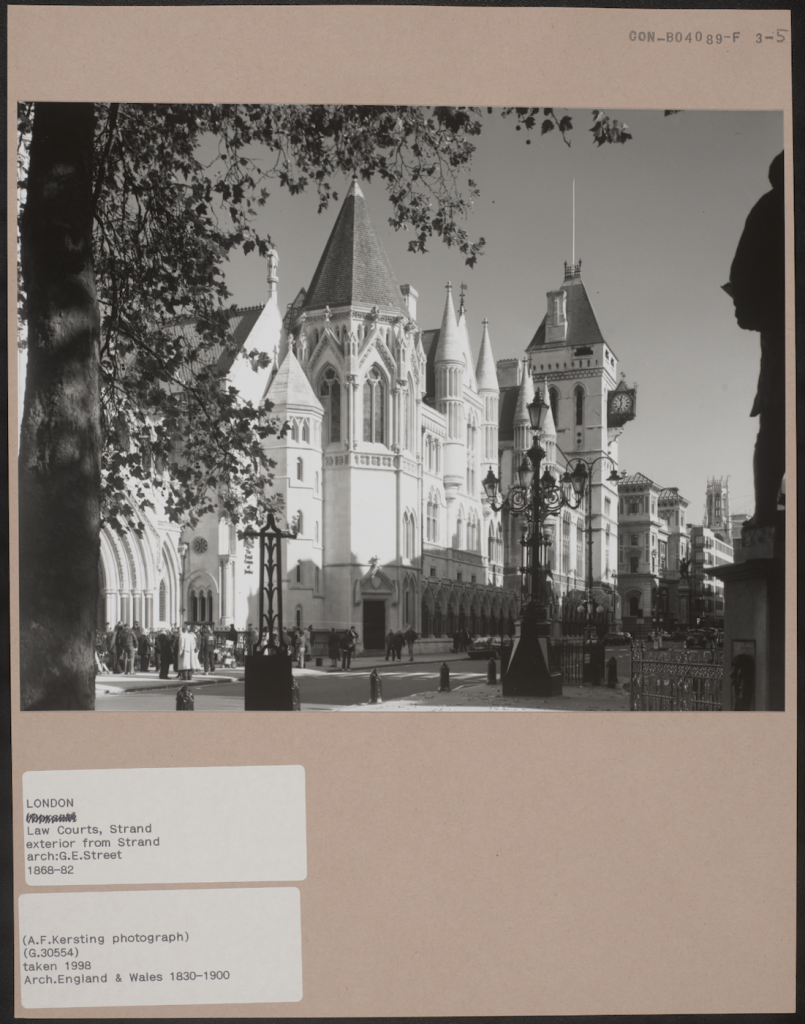
CON_B04089_F003_005, The Royal Courts of Justice, 1998, by Anthony Kersting, The Courtauld Institute of Art. CC-BY-NC.
And we jump forward rather significantly for this photograph! In 1998, Kersting captured the Royal Courts of Justice looking resplendent in the sun. The main differences in the last 22 years seems to be the addition of the zebra crossing and additional street signs. Without ugly signage, the Kersting photo seems more timeless.
Courtauld Volunteer Michael Mayes writes:
“The first of these images is probably taken from the north side of St. Clement Danes Church. The framing and contrast are so carefully executed so much so that the space doesn’t appear cluttered. There’s a lot going on though. There is a camera crew ready and waiting for whichever VIP has “gone to law”, a scene that has been replicated many times down the years.”
Check out Michael’s Layers of London record to see other angles of the building taken by Kersting and another Conway library contributor.
Find out more about Anthony Kersting on Courtauld Digital Media blog and explore the Conway Library’s collection on the Layers of London website.

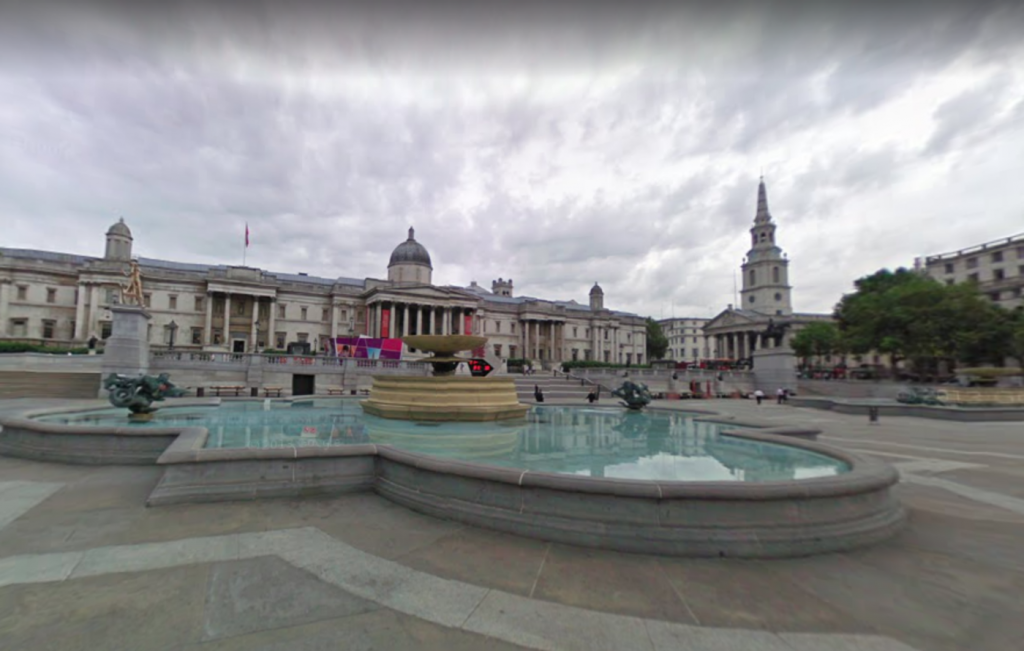
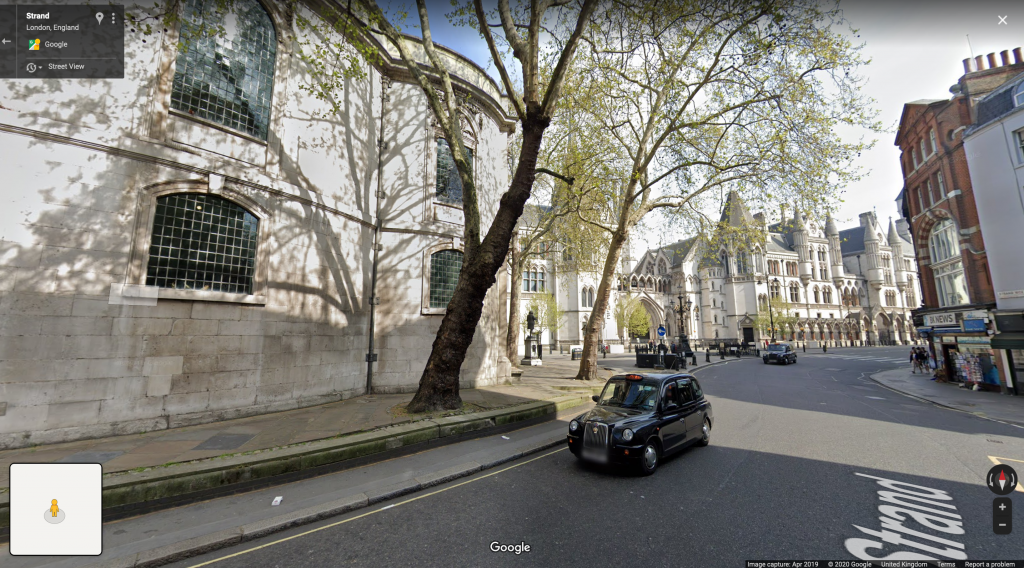

The closest one can get on streetview to the Royal Courts of Justice picture is here:
https://goo.gl/maps/1odiKxC4SJgXrgxGA
The streetscape from that viewpoint is almost identical today.
To replicate the photo, one would go to the streetview viewpoint and go about four steps backwards and one to the left. (Pan the streetview picture round to see the tree and the statue that are to the left and right in the original picture.)
Also – in “The View From Embankment” note on the far left the steelwork associated with the demolition of Waterloo Bridge and the temporary steel replacement.
Hello Chris,
Thank you so much for your comment – and for the Streetview link!
And what a fabulous extra detail of note, thank you for sharing.
Fran, assistant editor.